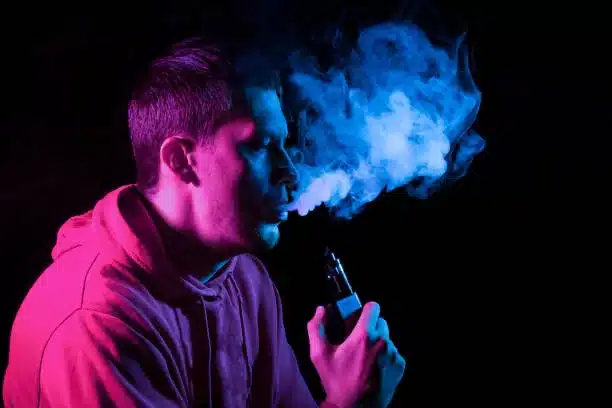One of the most painful truths about people who smoke is that almost all of them have tried to quit, but it is an exceptionally difficult battle to win the first time and continues to be difficult for a very long time afterwards.
This is, in no small part, why vape hardware is such an important invention; it helps ease the transition away from tobacco by supplying nicotine in a way that is substantially less harmful than cigarettes, pipe tobacco or cigars.
Once you make the switch and stick to it, you can either continue to vape or use less powerful vape juices to reduce your dependence on nicotine as well. It is an effective system, one that always must be presented in the face of calls to ban a vital anti-smoking tool outright.
Because trying to quit without some form of nicotine is exceptionally unpleasant.
Why Is It Called Cold Turkey?
Besides being the title of a John Lennon song, going cold turkey is the common term used for trying to break an addiction without any help, relying purely on willpower to defy a chemical dependency.
Whilst it is possible, particularly with a strong support network and a therapist, going cold turkey is not exactly a pleasant option, with a bombardment of physical, biochemical and psychological symptoms causing cravings that can make people start smoking again.
Why we call suddenly stopping an addiction “going cold turkey” is unclear, and whilst there is some debate as to the origins of the expression, it is known that it was not initially used to refer to smoking.
The first use of the term is believed to be in a 3rd January 1877 issue of the satirical magazine Judy, where a character in a fictional diary cuts his cousin out of his will after being served cold turkey several days in a row in disgust at being treated so badly.
This spread from London to the rest of Great Britain, with Mr Humes’ behaviour described as the “cold turkey treatment”. Eventually, the term stuck and started to be used in more general exclusionary senses.
However, there are other theories as to where the term came from, such as how the skin of a cold raw turkey features a lot of goosebumps, which is similar to the acute withdrawal symptoms of tobacco and opioids.
By 1920, that term was cited by a medical bulletin, which explained that the term was used as slang for when people “suffer it out” and voluntarily stop taking opiates.
What Makes It So Difficult?
Going cold turkey is obviously very difficult. Nobody who smokes is unaware of the hold that it has; after all, those cravings are the very reason they smoke.
However, what can often surprise people is just how strong, uncomfortable and even excruciatingly physically painful these cravings can be.
Whilst going cold turkey with cigarettes is not as dangerous as it is for a substance like alcohol, where it can cause life-threatening seizures, tremors and delirium, it often runs the risk of not only failing but also putting any future attempts at quitting at a disadvantage.
This is both physical and psychological, tying into one of the more insidious ways that nicotine is addictive in the first place, which is that it creates a problem that it is the solution to.
Quite a few people who are addicted to smoking claim that it eases stress, helps them focus, concentrate and do better on tasks that require close concentration such as examinations. This is why a lot of smokers do so more when under pressure.
However, in practice, nicotine itself causes stress and reduces mental concentration, only to act as a caffeine-like stimulant that creates the illusion of increased focus and mental capacity.
This, along with binding to receptors in the brain that produces more dopamine that the brain promptly cancels out also causes withdrawal symptoms until that biochemical aspect fades away.
As well as this, nicotine withdrawal happens exceptionally quickly; within three hours of your last smoke, you will start to crave another one and feel many common symptoms such as dry mouth, jitters, irritability and palpitations.
Alongside these, stomach upsets, an increase in appetite, abdominal cramping, increased sweating, migraines and insomnia are all physical symptoms that a lot of smokers going cold turkey are likely to feel, all with the intention of making you go back to the carton.
These physical symptoms tend to peak after three days, which is why the first 48 hours are often the most difficult when trying to quit, and whilst it is not entirely smooth sailing after that, each step will start to get a little easier.
The psychological effects can affect people for much longer, lasting months or even years after the last cigarette, and are often the reason why quitting alone is so difficult.
Besides the psychological cravings for nicotine, which can manifest in the form of oral fixations, strange nightmares and frustration as you struggle to focus on anything else, there are other psychological symptoms that can manifest as a direct result
Irritability is common but can also extend to unpredictable mood swings as the mind attempts to manage without a chemical it feels it relies upon.
At its worst, it can lead to or magnify symptoms of anxiety and depression, although this can in some cases be the result of people with anxiety or depression self-medicating with cigarettes to try and numb its effects.
What Should You Do If You Try And Fail Going Cold Turkey?
The most important first step is to realise that you took the hardest road possible to try and improve your health. It takes a lot of strength to even start on that path so try to avoid feeling hurt that you did not win a fight that was rigged from the start.
The next and most vital step is to look into the next steps, and that could involve consulting your doctor about potential nicotine replacement therapy options, asking your pharmacist and getting an expert opinion as to why this did not work.
They can suggest the right treatment, whether it is vaping, patches, gum, therapy or a combination of treatments.


